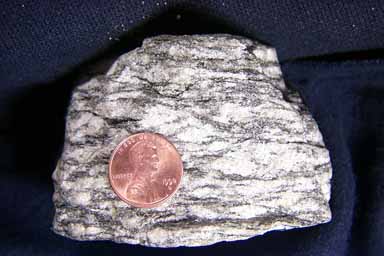Granite turns into gneiss.
What causes granite to turn into gneiss.
Gneiss is a metamorphic rock granite is an igneous rock and sandstone is a sedimentary rock.
The mineral composition of both granite and gneiss is same but alteration of granite because of very high pressure and temperature leads to the formation of gneiss.
Metamorphic rocks form from heat and pressure which changes the original or parent rock into a completely new rock.
Granite gneiss can also form through the metamorphism of sedimentary.
Not all gneiss is obtained from granite and there are also diorite gneiss biotite gneiss garnet gneiss and so on.
With still more metamorphism gneisses can turn to migmatite and then totally recrystallize into granite.
Granite turns into gneiss.
Minerals are seen arranged in bands in gneiss.
If the granite gets buried deep in the crust it often changes to a gneiss.
If it is part of a mountain it gets weathered eroded and transported to the ocean.
Well gneiss dosent turn into granite.
All rocks undergo a series of processes called the rock cycle where one type of rock changes into another.
By heat or pressure sometimes both.
The appearance of granular minerals is what marks the transition into gneiss.
The change from granite to gneiss is not mineralogical i e.
Intense heat and pressure can also metamorphose granite into a banded rock known as granite gneiss this transformation is usually more of a structural change than a mineralogical transformation.
Granites at the surface are exposed to weathering in which they break down into mostly quartz and feldspars.
This is due to the long minerals in the original granite lining up perpendicular to a regional stress field.
By heat or pressure sometimes both.
Short succinct and correct answer.
These minerals are then transported in streams and rivers and often end up as sediments in the oceans.
There are no chemical changes but structural.
These rocks primarily consist of quartz feldspar and mica.
Despite its highly altered nature gneiss can preserve chemical evidence of its history especially in minerals like zircon which resist metamorphism.
Another important structural change is the development of foliation or linear appearance in a gneiss.
More fleshed out fuller and still correct answer.

